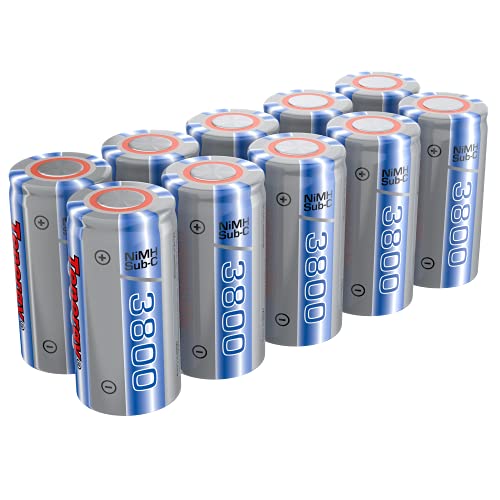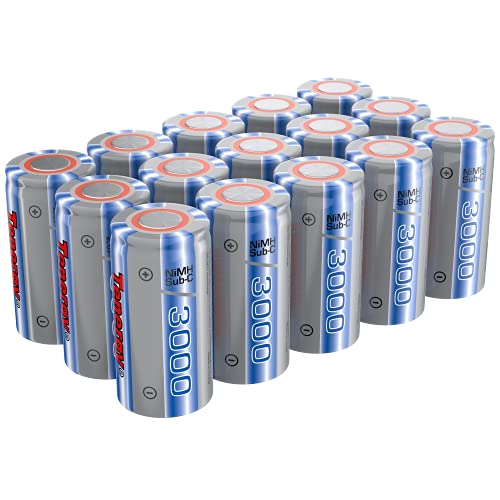
Power tool batteries are the unsung heroes of the construction and DIY landscape, enabling tools to operate with unparalleled mobility and efficiency. Serving as the heartbeat of various devices, from drills to saws, these batteries have revolutionized how we approach tasks, eliminating the constraints of cords and direct power sources.
Their evolution has led to more prolonged use and more potent and lightweight tools. Understanding the intricacies of these power sources is crucial for anyone keen on maximizing their tool’s performance and lifespan.
Different Types of Power Tool Batteries
Nickel-Cadmium (NiCd)
Pros:
- Durability: NiCd batteries are robust and can handle considerable abuse.
- High Discharge Rates: They can deliver power effectively under heavy loads.
Cons:
- Memory Effect: They must be fully discharged before charging, or they might lose capacity.
- Weight: Heavier compared to other batteries.
- Environmental Impact: Cadmium is toxic and hard to dispose of.
Nickel-Metal Hydride (NiMH)
Pros:
- Higher Capacity: Offers up to 50% more capacity than NiCd batteries.
- Less Memory Effect: Though still present, it’s less pronounced than in NiCd batteries.
Cons:
- Shelf Life: They tend to self-discharge faster than NiCd batteries.
- Temperature Sensitivity: Performance can drop in cold conditions.
Lithium-ion (Li-ion)
Pros:
- Lightweight: Offers more capacity with less weight.
- No Memory Effect: Can be charged anytime without affecting the battery’s capacity.
- High Energy Density: More power for the same size than NiCd and NiMH.
Cons:
- Cost: Generally more expensive.
- Lifespan: It degrades over time, even when not in use.
How to Extend the Lifespan of Your Power Tool Battery
1. Proper Storage
Store your batteries in a cool and dry place, away from direct sunlight. Avoid extremely hot or cold environments.
2. Regular Use
Using your battery regularly can help maintain its health. Don’t let it sit unused for prolonged periods.
3. Avoid Complete Discharge
For Li-ion batteries, avoid letting them discharge completely. It’s best to recharge them when they reach 20%.
4. Use The Right Charger
Always use the charger provided by the tool manufacturer or a recommended replacement.
5. Clean your battery contacts
Dust and dirt can accumulate on your battery’s metal contacts and interfere with the power flow. Use a soft cloth or cotton swab to wipe the contacts and remove debris gently.
6. Recycle your battery when it reaches the end of its life
Do not throw away your old battery in the trash, as this can harm the environment and pose a fire hazard. Instead, please take it to a local recycling center or a retailer that accepts used batteries for disposal.
Best Practices in Recycling Power Tool Batteries
Given the environmental concerns, it’s essential to dispose of your old batteries properly:
- Local Recycling Centers: Many offer battery recycling services.
- Battery Collection Programs: Some manufacturers and stores have take-back programs.
- Hazardous Waste Programs: Your city might have specific drop-off points for hazardous waste, including batteries.
Decoding Power Tool Battery Specifications
Voltage (V)
It represents the power output. A higher voltage means more power and is suitable for heavier tasks.
Ampere-hour (Ah)
This determines the battery’s capacity. A higher Ah rating indicates the battery can last longer on a single charge.
Watt-hour (Wh)
Wh is a measure of the battery’s energy capacity. It’s calculated as Voltage x Ah.
Understanding Battery Performance with Age
Batteries are essential for many devices, such as laptops, smartphones, and electric vehicles. However, batteries do not last forever, and their performance degrades over time. This degradation can affect the battery capacity, power output, and cycle life.
Conclusion
Power tool batteries are an essential component of our modern toolkits. Understanding their types, best practices and performance metrics ensures you’re always ready for the job. With proper care and maintenance, you can extend your battery’s lifespan and get the most out of your power tools.
Last update on 2024-07-26 / Affiliate links / Images from Amazon Product Advertising API


































